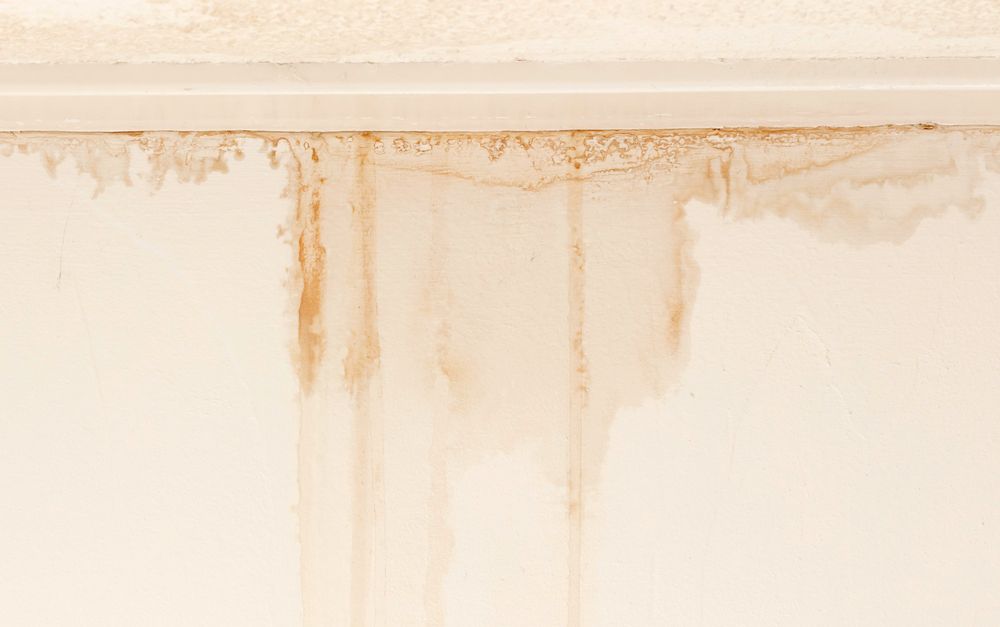6 Ways to Find Concealed Water Leakages in Your House
6 Ways to Find Concealed Water Leakages in Your House
Blog Article
We've stumbled on the article pertaining to Finding hidden leaks down the page on the net and believe it made perfect sense to share it with you on this page.

Early discovery of dripping water lines can alleviate a prospective catastrophe. Some tiny water leakages might not be noticeable.
1. Examine the Water Meter
Examining it is a guaranteed way that assists you discover leakages. If it moves, that indicates a fast-moving leakage. This implies you might have a sluggish leakage that might even be below ground.
2. Inspect Water Intake
Evaluate your water bills as well as track your water consumption. As the one paying it, you ought to notice if there are any type of discrepancies. If you detect sudden changes, in spite of your usage coinciding, it implies that you have leaks in your plumbing system. Remember, your water bill should drop under the very same variety each month. An abrupt spike in your bill suggests a fast-moving leakage.
A steady rise every month, also with the very same routines, reveals you have a slow-moving leakage that's likewise slowly escalating. Call a plumber to extensively examine your building, specifically if you feel a warm location on your floor with piping underneath.
3. Do a Food Coloring Examination
When it comes to water usage, 30% comes from bathrooms. If the shade somehow infiltrates your bowl during that time without flushing, there's a leak in between the storage tank as well as bowl.
4. Asses Exterior Lines
Don't fail to remember to inspect your outside water lines also. Examination faucets by attaching a garden hose pipe. Ought to water seep out of the connection, you have a loose rubber gasket. Replace this and ensure all connections are limited. If you have actually got a lawn sprinkler, it will aid get it properly examined and maintained each year. One small leakage can squander lots of water and surge your water costs.
5. Inspect and Examine the Situation
Home owners must make it a behavior to check under the sink counters and also even inside cupboards for any kind of bad odor or mold and mildew growth. These two warnings indicate a leak so prompt attention is needed. Doing regular inspections, also bi-annually, can save you from a significant trouble.
Extra importantly, if you know your residence is currently old, keep a watchful eye on your heaters, hose pipes, pipelines etc. Look for discolorations and also deteriorating as a lot of devices and pipelines have a life span. They will likewise naturally degrade as a result of tear and also put on. Do not wait for it to rise if you think leaking water lines in your plumbing system. Call an expert plumber today so you don't end up with a dreadful mess in your home.
Early discovery of dripping water lines can alleviate a prospective disaster. Some small water leaks might not be noticeable. Checking it is a proven means that helps you find leakages. One little leak can waste loads of water and also increase your water costs.
If you suspect dripping water lines in your plumbing system, do not wait for it to intensify.
WARNING SIGNS OF WATER LEAKAGE BEHIND THE WALL
PERSISTENT MUSTY ODORS
As water slowly drips from a leaky pipe inside the wall, flooring and sheetrock stay damp and develop an odor similar to wet cardboard. It generates a musty smell that can help you find hidden leaks.
MOLD IN UNUSUAL AREAS
Mold usually grows in wet areas like kitchens, baths and laundry rooms. If you spot the stuff on walls or baseboards in other rooms of the house, it’s a good indicator of undetected water leaks.
STAINS THAT GROW
When mold thrives around a leaky pipe, it sometimes takes hold on the inside surface of the affected wall. A growing stain on otherwise clean sheetrock is often your sign of a hidden plumbing problem.
PEELING OR BUBBLING WALLPAPER / PAINT
This clue is easy to miss in rooms that don’t get much use. When you see wallpaper separating along seams or paint bubbling or flaking off the wall, blame sheetrock that stays wet because of an undetected leak.
BUCKLED CEILINGS AND STAINED FLOORS
If ceilings or floors in bathrooms, kitchens or laundry areas develop structural problems, don’t rule out constant damp inside the walls. Wet sheetrock can affect adjacent framing, flooring and ceilings.
https://www.servicemasterbyzaba.com/blog/how-to-detect-water-leakage-in-walls/

Do you like reading up on Locating water leaks? Create a short review down the page. We will be delighted to hear your suggestions about this page. Hoping that you come back again soon. So long as you enjoyed our post kindly remember to pass it around. Thanks for your time spent reading it.
Report this page